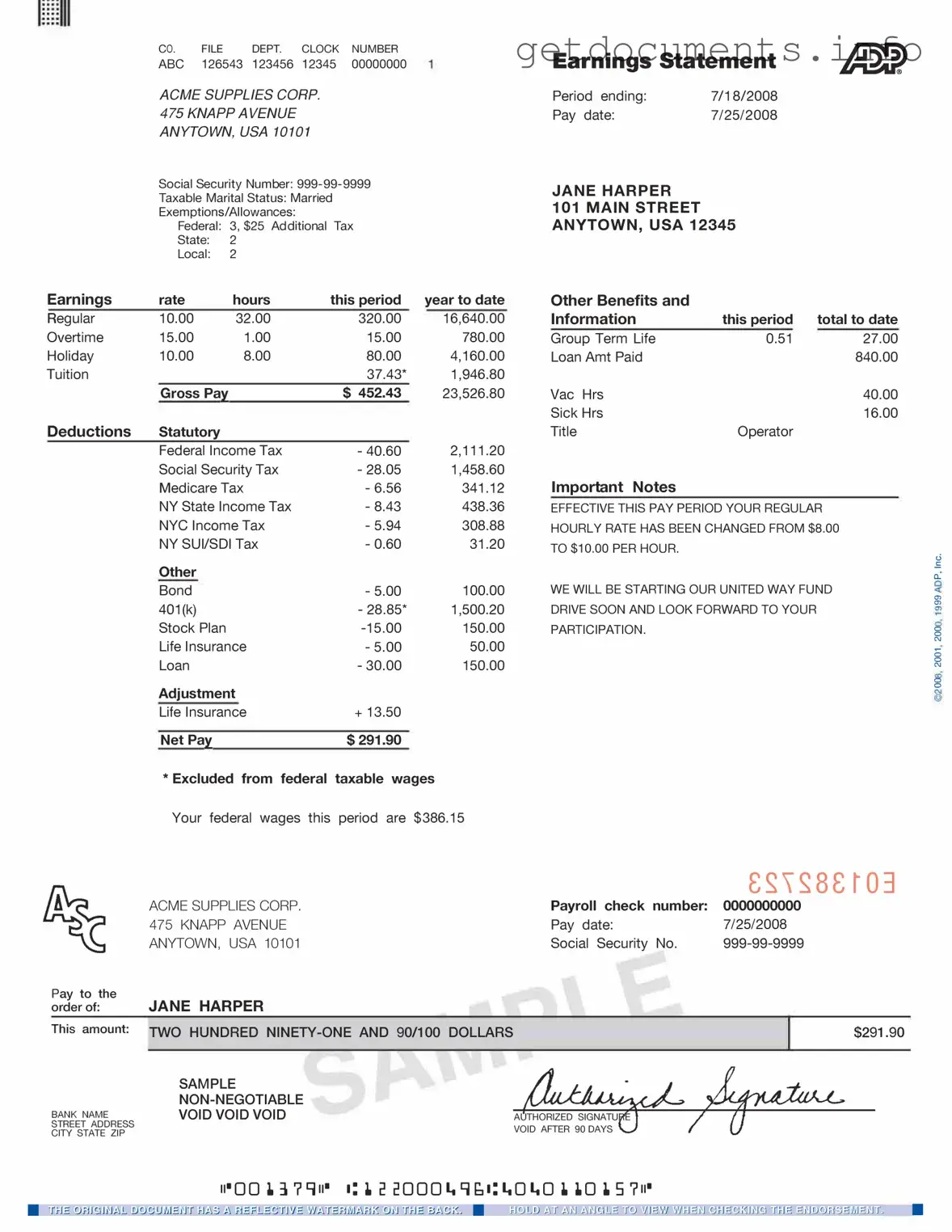The ADP Pay Stub form is a crucial document for employees, providing a detailed breakdown of their earnings and deductions for each pay period. This form typically includes essential information such as the employee's gross pay, net pay, and various deductions, including taxes and benefits contributions. Understanding the components of the pay stub can empower employees to manage their finances more effectively. For instance, it often highlights year-to-date earnings, which can be invaluable for budgeting and tax preparation. Additionally, the pay stub may outline hours worked, overtime pay, and any bonuses received, offering a comprehensive view of an employee's compensation. With this information readily available, individuals can ensure that their pay aligns with their expectations and address any discrepancies promptly. Familiarity with the ADP Pay Stub form not only aids in financial planning but also enhances awareness of one’s employment benefits and tax obligations.
